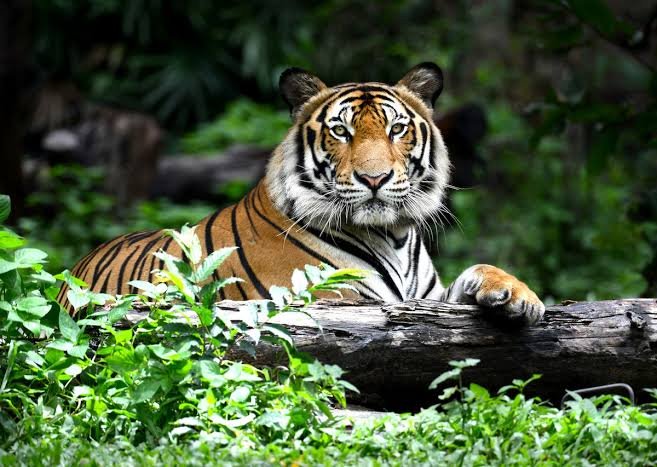International Tiger Day or World Tiger Day is observed every year on 29 July to raise awareness about the gradual decline in tiger population and encourage tiger conservation. International Tiger Day was established in 2010 at the Saint Petersburg Tiger Summit in Russia. In which the governments of tiger-populated countries pledged to double the population of tigers by 2020.
 |
| World Tiger Day |
According to the World Wildlife Fund (WWF), around 3,900 tigers live in the wild around the world. Since the beginning of the 20th century, more than 95 percent of the world's tiger population has been lost. A WWF report says that about 100 years ago, there must have been more than 100,000 tigers roaming the planet.
There are different species of tigers – Siberian tiger, Bengal tiger, Indochinese tiger, Malay tiger and South China tiger. Bengal tigers are mainly found in India, with smaller populations in Bangladesh, Nepal, Bhutan, China and Myanmar. It is the largest of all the tiger subspecies, with over 2,500 left in the wild.
- The creation of India's tiger reserves in the 1970s helped stabilize tiger numbers. After a survey in 18 states, the Indian government estimated the number of tigers in the country at 2,967 in 2019.
- Tiger Estimation Report 2018 released by Prime Minister Narendra Modi on July 29, 2019 states that according to the tiger census, the tiger population in India has increased from 2,967 in 2018 to 2,967.
- A tiger's roar is impressively loud—a tiger's roar can be heard from two miles away.
- They are also quite fast – tigers can move at speeds of up to 40 mph.
- Tiger is said to be the largest cat in the world – the average tiger weighs 800.278 pounds.
- Takes some time to learn to hunt – A cub can hunt only after it is two or three years old.
- India has the largest tiger population – 70% of the world's wild tiger population is in India.
- 1973- Project Tiger-India launched Project Tiger to revive the tiger population.
- 2010 - Countries in the Project TX2-13 Tiger Range commit to TX2 to double the number of wild tigers by 2022.
- 2017 - Two tiger subspecies are listed - the IUCN recognizes the continental tiger and the Sunda Island tiger as tiger subspecies.
- 2022-Year of the Tiger- WWF aims to double the number of wild tigers in 2022.
- According to the World Wide Fund for Nature (WWF), the current population of the wild cat is 3,900. As mentioned earlier, by next year, WWF, along with countries with tiger populations, aims to double their numbers to 6,000. The day is even more significant, as there was a time when tigers were seen roaming most of the African continent. However, poaching, illegal wildlife trade and habitat loss reduced their population and range by about 7%.
- India is home to 51 tiger reserves located in 18 states. The tiger census of 2018 showed an increase in the population of the national animal of India.
International Tiger Day was first observed in 2010 when it was found that 97% of all wild tigers had disappeared in the last century, with only 3,000 remaining. It is not news that tigers are on the verge of extinction and International World Tiger Day aims to prevent the numbers from deteriorating. Habitat loss, climate change, poaching and poaching are just some of the factors that are responsible for the decline in the tiger population. Along with conserving these species, the day also aims to protect and expand their habitats. Many international organizations like WWF, IFW and Smithsonian Institute also celebrate International Tiger Day.
With loss of habitat and climate change, tigers are increasingly coming into conflict with humans. The poaching and illegal trade industry is also a very serious threat that wild tigers face. Cases of poaching and smuggling are on the rise due to the demand for tiger bone, skin and other body parts. This has resulted in local extinctions, making the revival of tiger populations near impossible. Another threat that has negatively affected the tiger population is habitat loss.
Across the world, we are witnessing loss of tiger habitats due to access roads, human settlements, timber harvesting, plantations and agriculture. In fact, only 7% of the original tiger habitats are still intact today. Experts also worry that the lack of genetic diversity in tigers could lead to inbreeding into smaller populations. The ever-increasing habitat loss means that conflicts between tigers and humans are on the rise. Tigers can wander in human populations which is a matter of concern for people as well as these majestic cats.
International tiger day theme 2022
Last year, the theme for the day was - "Their survival is in our hands." However, this year's theme for International Tiger Day has not been announced yet.
Summary
| Facebook Page | Click Here |
| Homepage | Click Here |

